Click on images to enlarge
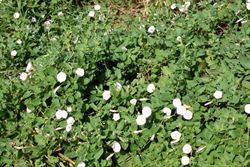
infestation (Photo: Trevor James)
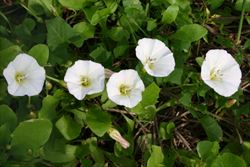
habit (Photo: Trevor James)
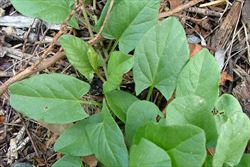
lower leaves (Photo: Sheldon Navie)
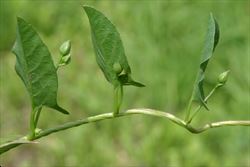
stem, leaves and flower buds (Photo: Trevor James)
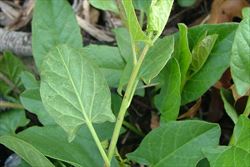
close-up of stem and leaf undersides (Photo: Sheldon Navie)
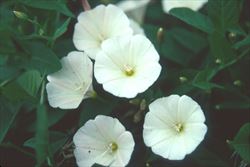
white flowers (Photo: Steve Adkins)
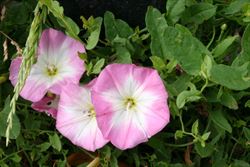
pink flowers (Photo: Trevor James)
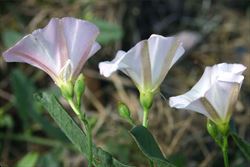
flowers from side-on showing small sepals (Photo: Trevor James)
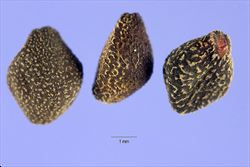
close-up of seeds (Photo: Steve Hurst at USDA PLANTS Database)
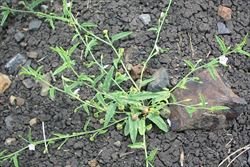
the native pink bindweed (Convolvulus erubescens), with smaller flowers (Photo: Sheldon Navie)
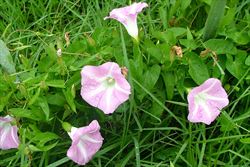
large bindweed (Calystegia sepium), another similar native plant with large bracts partially enclosing the sepals (Photo: Sheldon Navie)

swamp bindweed (Polymeria calycina), another similar native plant with smaller flowers and large bracts partially enclosing the sepals (Photo: Sheldon Navie)
Scientific Name
Convolvulus arvensis L.
Family
Convolvulaceae
Common Names
annual bindweed, barbine, bear bind, bindweed, common bindweed, corn bind, corn-bind, cornbine, corn-lily, creeping Charlie, creeping Jenny, devil's-guts, European bindweed, European glorybind, European morningglory, field bindweed, field morning glory, field morning-glory, field morningglory, green vine, greenvine, hedge-bells, laplove, lesser bindweed, lovevine, morning glory, morning-glory, orchard morning-glory, orchard morningglory, perennial morningglory, possession vine, small bindweed, small-flowered morning glory, small-flowered morning-glory, small-flowered morningglory, smallflowered morningglory, wild morning glory, wild morning-glory, wild morningglory
Origin
This species is native to Europe (i.e. Denmark, Finland, Ireland, Norway, Sweden, UK, Austria, Belgium, Czechoslovakia, Germany, Hungary, the Netherlands, Poland, Switzerland, Belarus, Estonia, Latvia, Lithuania, Moldova, Ukraine, Albania, Bulgaria, Greece, Italy, Romania, Yugoslavia, France, Portugal and Spain), Asia and northern Africa (i.e. Algeria, Egypt, Libya, Morocco and Tunisia).
Naturalised Distribution
A very widely naturalised species that is prominent in south-eastern and eastern Australia. It is most common in the sub-coastal, and to a lesser extent the coastal, regions of New South Wales and relatively common in Victoria, ACT, inland southern Queensland, south-eastern South Australia, Tasmania and south-western Western Australia. Also recorded from other parts of New South Wales and Queensland.
Notes
This species is primarily a weed of agricultural areas (i.e. crops and cultivation) and gardens. However, it is also regarded as an environmental weed in Victoria, Tasmania, South Australia, Queensland and Western Australia.
In natural environments, such as riparian zones, field bindweed (Convolvulus arvensis) competes with and displaces native bindweeds and other native plants. Due to its climbing ability, it is able to infest various levels of a plant community (i.e. from ground level to the tops of trees).

